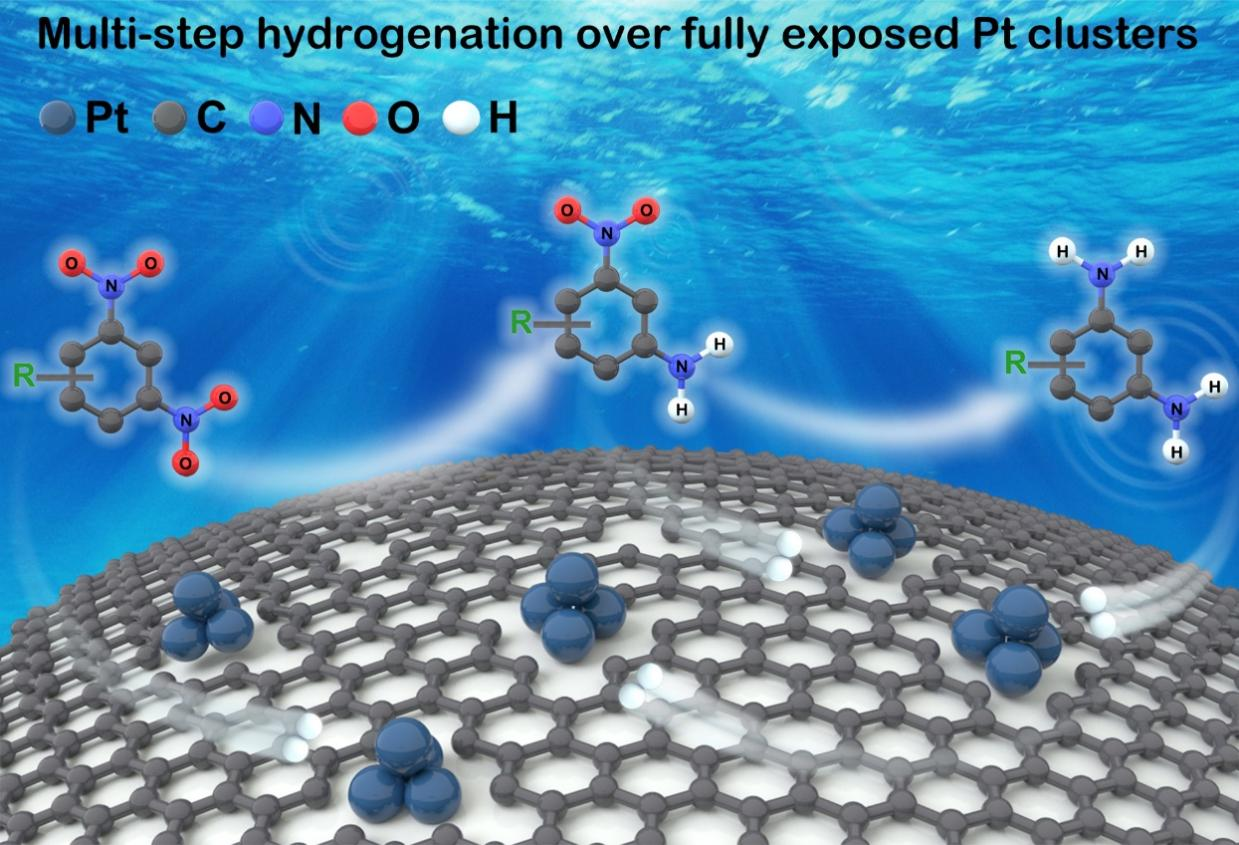Scientists Propose New Strategy to Design and Synthesize Fully Exposed Pt Clusters for Efficient Catalysis of Multi-step Hydrogenation Reactions
The hydrogenation of nitroarenes is an eco-friendly method for the production of anilines. For di-nitroaromatics hydrogenation, it is a challenge to achieve the multi-step hydrogenation reaction with high activity and selectivity as the presence of two nitro groups requires a rather complicated process. As a result, many conventional precious metal catalysts suffer from low activity and metal utilization in the multi-step hydrogenation. Hence, it is essential to develop efficient catalysts with high activity and selectivity, high metal utilization, and low cost for this multi-step hydrogenation reaction.
Recently, Prof. LIU Hongyang and his research team from Institute of Metal Research, Chinese Academy of Sciences and Prof. MA Ding from Peking University etc., have developed a novel strategy to design and synthesize highly efficient fully exposed Pt clusters catalysts for multi-step hydrogenation reactions. This work was published in Nature Communications.
In this work, the researchers fabricated a fully exposed Pt clusters catalyst (Ptn/ND@G) consisting of an average of four Pt atoms with the maximum atom utilization on a defect-rich nanodiamond@graphene supports for the complex multi-step hydrogenation. Ptn/ND@G showed an excellent catalytic activity under room temperature: high TOF (40647 h-1), high yield (>99%), and good stability (5 cycles), which is better than Pt single atoms catalysts, Pt nanoparticles catalysts, and even all other known catalysts. Moreover, Ptn/ND@G exhibited excellent catalytic performance for the multi-step hydrogenation of di-nitroarenes with different substitutional groups.
In-situ DRIFTS and DFT calculations indicate that the synergistic interaction between of fully exposed Pt clusters is beneficial to improve the co-adsorption of reactants and H2, as well as the desorption of intermediates/products, resulting in the excellent catalytic performance for this multi-step hydrogenation reaction. These findings open a new avenue for the design and development of novel catalysts for multi-step hydrogenation.

Schematic diagram of the multi-step hydrogenation of 2,4-DNT catalyzed by fully exposed Pt clusters catalyst.(Image by IMR)
Contact:
LIU Hongyang
Institute of Metal Research, Chinese Academy of Sciences
Phone:86-24-83970027
Email: liuhy@imr.ac.cn